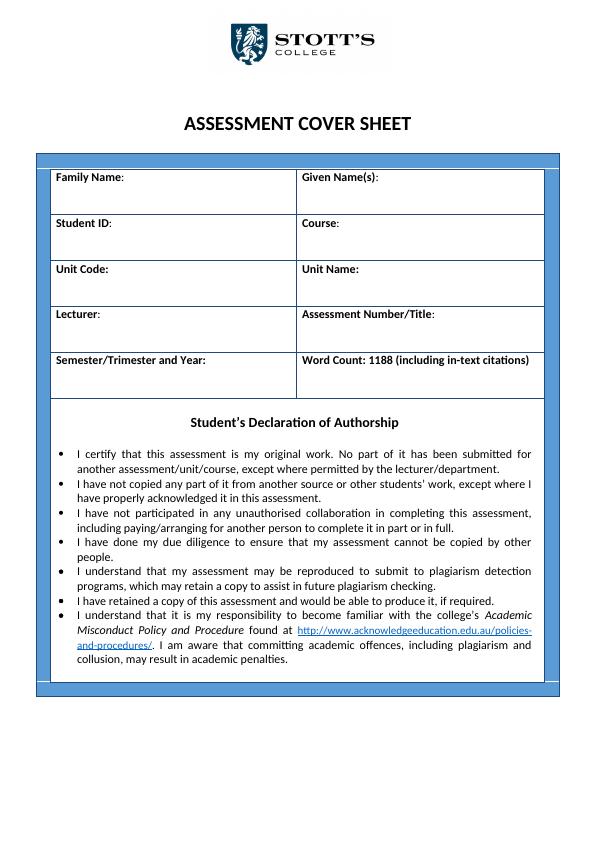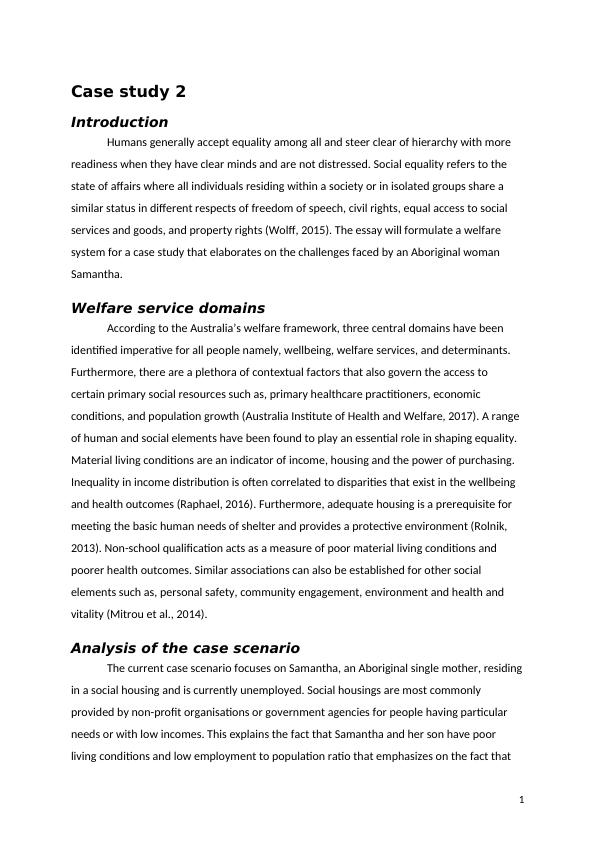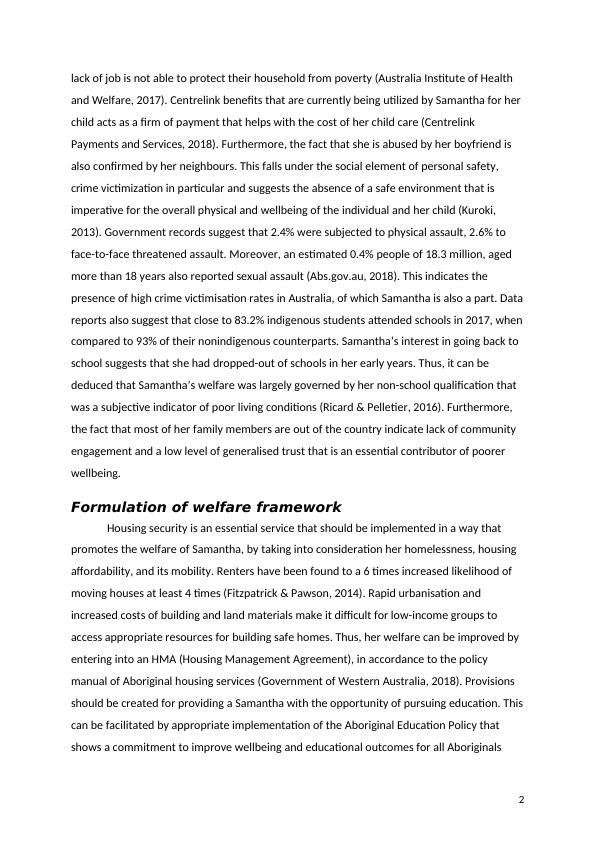Formulating a Welfare System for a Case Study on Challenges Faced by an Aboriginal Woman
This assignment is about specialised mental health care facilities in Australia, including public and private psychiatric hospitals, community mental health care services, and residential mental health services. The assignment covers data on the number of hospitals, beds, and staff, as well as the coverage period and last update date. The main focus is on the provision of care and services in 2015-16.
Added on 2023-06-09
About This Document
Formulating a Welfare System for a Case Study on Challenges Faced by an Aboriginal Woman
This assignment is about specialised mental health care facilities in Australia, including public and private psychiatric hospitals, community mental health care services, and residential mental health services. The assignment covers data on the number of hospitals, beds, and staff, as well as the coverage period and last update date. The main focus is on the provision of care and services in 2015-16.
Added on 2023-06-09
End of preview
Want to access all the pages? Upload your documents or become a member.



